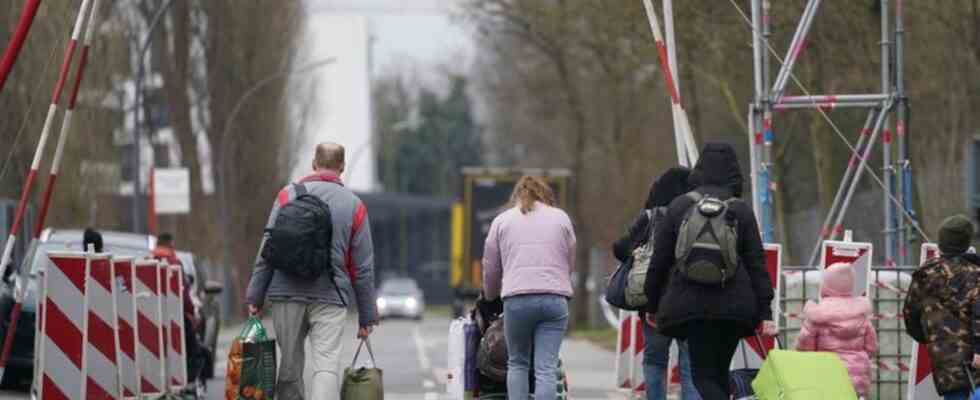migration
OECD expects record immigration as a result of the Ukraine war
Ukrainian refugees leave the refugee accommodation in Hamburg with their luggage. photo
© Marcus Brandt/dpa
The 2015 refugee crisis was a consequence of the civil war in Syria. But after the Russian attack on the Ukraine, the immigration figures from back then are likely to be exceeded again.
In Germany, the Ukraine war is expected to result in the year with the highest number of immigrants since reunification. As reported by the Organization for Economic Cooperation (OECD), the number of people moving to Germany by the end of the year is expected to be higher than in 2015. At that time, more than 2.1 million people came to Germany within a year – mainly as a result of the civil war in Syria. In the current year, the Federal Statistical Office registered more than 1.8 million immigrants to Germany from February to August alone, including around 952,000 Ukrainians who fled the Russian war of aggression.
Better distribution of refugees needed
Federal Interior Minister Nancy Faeser (SPD) wants to meet with representatives of municipal umbrella organizations on Tuesday to talk about better distribution of refugees in Germany.
The most recent migration report by the OECD speaks of a historic mass exodus as a result of the Russian attack. According to this, around five million people fled from Ukraine to the OECD countries by mid-September alone. With almost one million refugees, Germany is the most important receiving country in the OECD after Poland.
This is the OECD
The organization, headquartered in Paris, is an association of 38 industrial nations. It regularly researches immigration into its member countries; in addition to the EU countries, these include the USA, Canada and Japan.
According to the researchers, the admission and integration of Ukrainians in Germany worked much better than during the refugee crisis of 2015. “We’ve already learned a lot,” said Thomas Liebig, head of the OECD’s Department for International Migration. He referred to integration courses and the reception infrastructure. However, access to the labor market is relatively modest at 10 to 15 percent in most OECD countries.
65 percent are women and girls
According to figures from the Federal Statistical Office, most immigrants from Ukraine were counted in March (431,000) and April (198,000) – that is, in the first two months after the Russian attack. The number then fell again, but was still well above the previous year’s level. 65 percent of the Ukraine refugees were women and girls. 37 percent of the immigrants were minors.
OECD Migration Study 2022 Communication from the Federal Statistical Office

